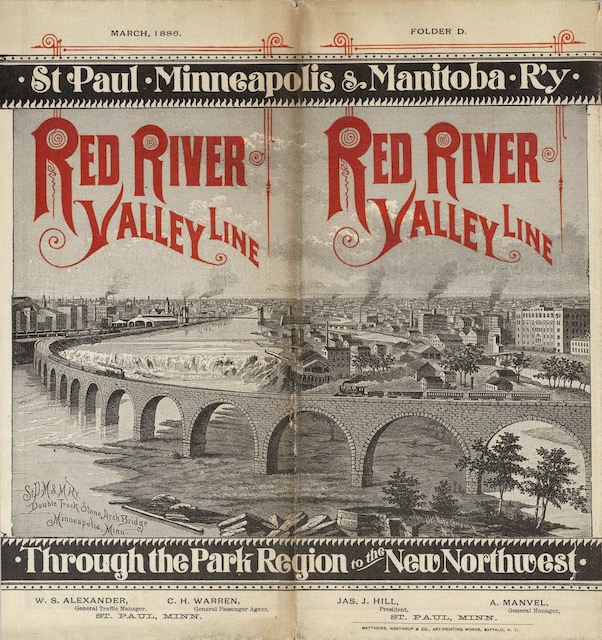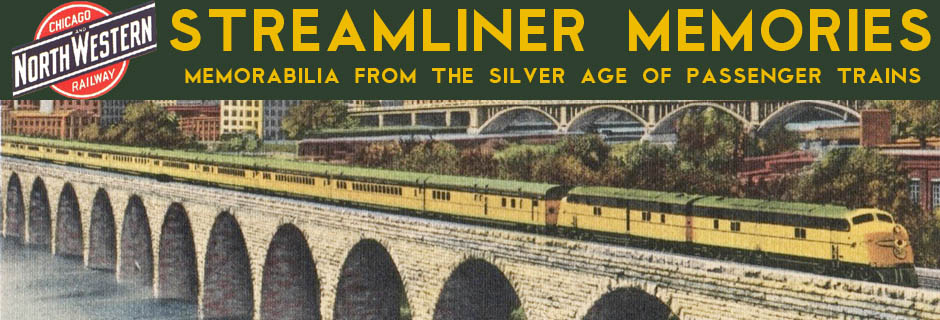In 1870, only a few hundred people farmed a few thousand acres in the Red River Valley of northwestern Minnesota and eastern North Dakota. Then James J. Hill blanketed the valley with rail lines of the St. Paul, Minneapolis & Manitoba Railway supporting millions of acres of wheat farms. For example, the map in this brochure shows that, from the Northern Pacific’s east-west line, Hill ran six parallel Manitoba lines for nearly 50 miles north an average of about 8 miles apart from one another, putting all farmers in a roughly 2-million-acre area no more than 5 or 6 miles from a rail head.
 Click image to download a 19.0-MB PDF of this timetable, which is from the David Rumsey map collection.
Click image to download a 19.0-MB PDF of this timetable, which is from the David Rumsey map collection.
“It is here that no. 1 hard wheat is produced, in quality, in quantity and to a certainty that has surprised the world,” says the map. Hill’s rail lines transported a large share of the wheat production of the entire country to mills in Minneapolis and Buffalo, where he built the world’s largest grain elevator so he could ship wheat from Duluth by steamship rather than share revenues with railroads east of St. Paul. The profits he made from Red River wheat enabled him to build west to Minot, Great Falls, and eventually the Pacific Northwest.
Most of the 24 panels on the other side of this brochure are devoted to describing the territory and attracting farmers to the region. But four panels of timetables show schedules for numerous unnamed trains from St. Paul, including two trains a day to Fargo, two trains a day to Breckenridge, and one train a day to Devils Lake, Grand Forks, Hinkley, and many other cities. Surprisingly, there are no trains listed to Duluth.
Two of the lines reached the Canadian border, where they met with lines of the Canadian Pacific. Hill was one of the original partners in the Canadian Pacific, and their plan was to make the Manitoba line part of that railway. But he eventually broke with the CP and built his own Great Northern Railway to Winnipeg, not to mention Seattle.
